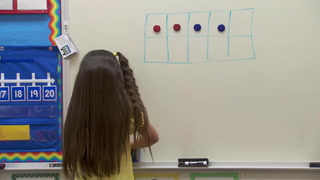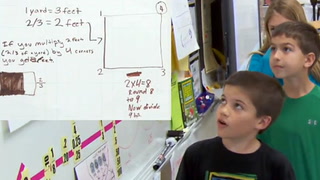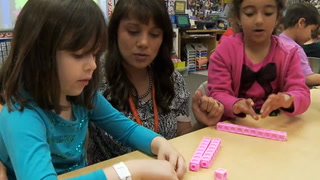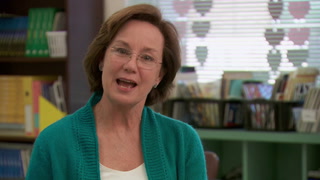Series AFT CCSS Math: A Passion for Fractions
Math.Practice.MP2
| Common core State Standards
- Math: Math
- Practice: Mathematical Practice Standards
-
MP2: Reason abstractly and quantitatively.
Mathematically proficient students make sense of quantities and their relationships in problem situations. They bring two complementary abilities to bear on problems involving quantitative relationships: the ability to decontextualize--to abstract a given situation and represent it symbolically and manipulate the representing symbols as if they have a life of their own, without necessarily attending to their referents—and the ability to contextualize, to pause as needed during the manipulation process in order to probe into the referents for the symbols involved. Quantitative reasoning entails habits of creating a coherent representation of the problem at hand; considering the units involved; attending to the meaning of quantities, not just how to compute them; and knowing and flexibly using different properties of operations and objects.
Math.Practice.MP3
| Common core State Standards
- Math: Math
- Practice: Mathematical Practice Standards
-
MP3: Construct viable arguments and critique the reasoning of others.
Mathematically proficient students understand and use stated assumptions, definitions, and previously established results in constructing arguments. They make conjectures and build a logical progression of statements to explore the truth of their conjectures. They are able to analyze situations by breaking them into cases, and can recognize and use counterexamples. They justify their conclusions, communicate them to others, and respond to the arguments of others. They reason inductively about data, making plausible arguments that take into account the context from which the data arose. Mathematically proficient students are also able to compare the effectiveness of two plausible arguments, distinguish correct logic or reasoning from that which is flawed, and--if there is a flaw in an argument--explain what it is. Elementary students can construct arguments using concrete referents such as objects, drawings, diagrams, and actions. Such arguments can make sense and be correct, even though they are not generalized or made formal until later grades. Later, students learn to determine domains to which an argument applies. Students at all grades can listen or read the arguments of others, decide whether they make sense, and ask useful questions to clarify or improve the arguments.
Math.5.NF.B.4b
Common core State Standards
- Math: Math
- 5: Grade 5
- NF: Numbers & Operations--Fractions
- B: Apply and extend previous understandings of multiplication and division
-
4b:
Apply and extend previous understandings of multiplication to multiply a fraction or whole number by a fraction.
a. Interpret the product (a/b) × q as a parts of a partition of q into b equal parts; equivalently, as the result of a sequence of operations a × q ÷ b. For example, use a visual fraction model to show (2/3) × 4 = 8/3, and create a story context for this equation. Do the same with (2/3) × (4/5) = 8/15. (In general, (a/b) × (c/d) = ac/bd.)
b. Find the area of a rectangle with fractional side lengths by tiling it with unit squares of the appropriate unit fraction side lengths, and show that the area is the same as would be found by multiplying the side lengths. Multiply fractional side lengths to find areas of rectangles, and represent fraction products as rectangular areas.
Save to My Resources
PLEASE CREATE A NEW ACCOUNT OR LOG IN TO ACCESS THIS CONTENT
Enjoy your first video for free. Subscribe for unlimited access.
Have questions about subscribing?
Click Here to learn more about individual subscriptions.
Click Here to learn more about School and Institution access.
Discussion and Supporting Materials
Thought starters
- Why does Ms. Pittard present students with a variety of solutions?
- How does critiquing solutions help students develop an understanding of multiplying fractions?
- What can you learn from Ms. Pittard about engaging all students?
School Details
Pathways Elementary School2100 Airport Road
Ormond Beach FL 32174
Population: 775
Data Provided By:

Teachers
Becky Pittard
Newest
|
4 MIN
|
5 MIN
|
5 MIN
UNCUT CLASSROOMS
| TCHERS' VOICE
English Language Arts














60 Comments
Jazmin Arien Sep 15, 2018 2:04am
Great lesson plan,,! Wish we could download the lesson plan.
Jolene Rude Jun 20, 2016 12:40am
Vanessa T. May 23, 2016 12:33am
Jaianne Pischel Feb 15, 2016 4:50pm
Julie Said Jan 22, 2016 5:21pm